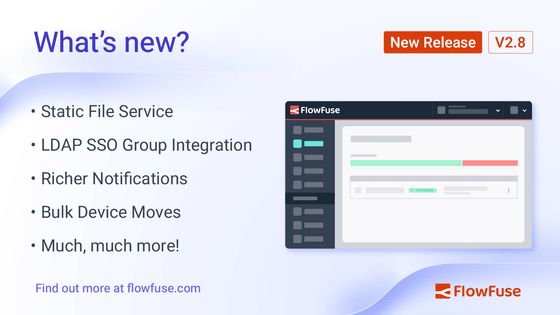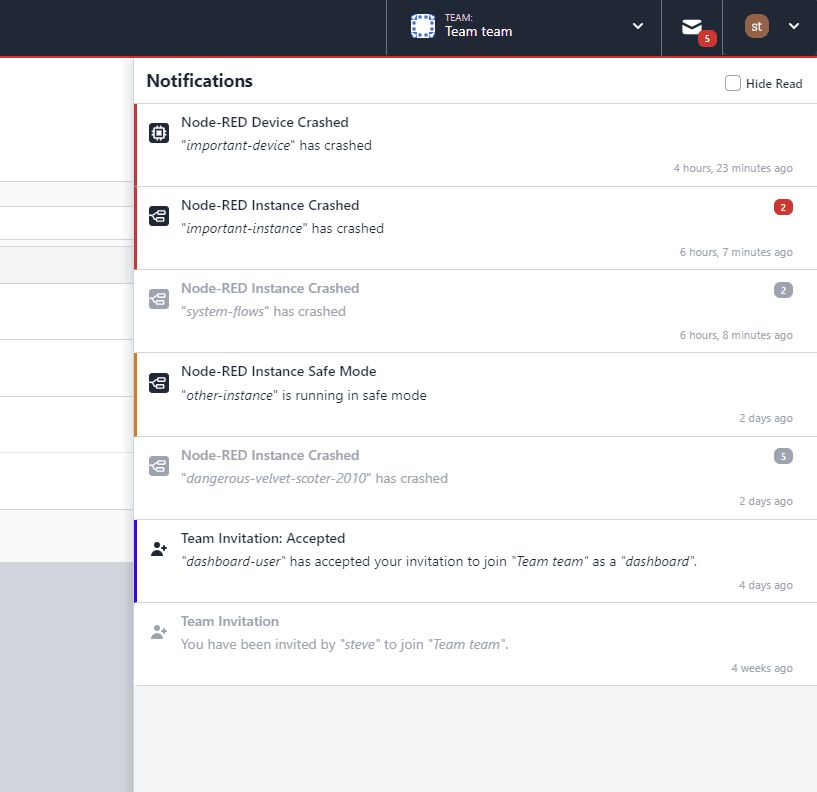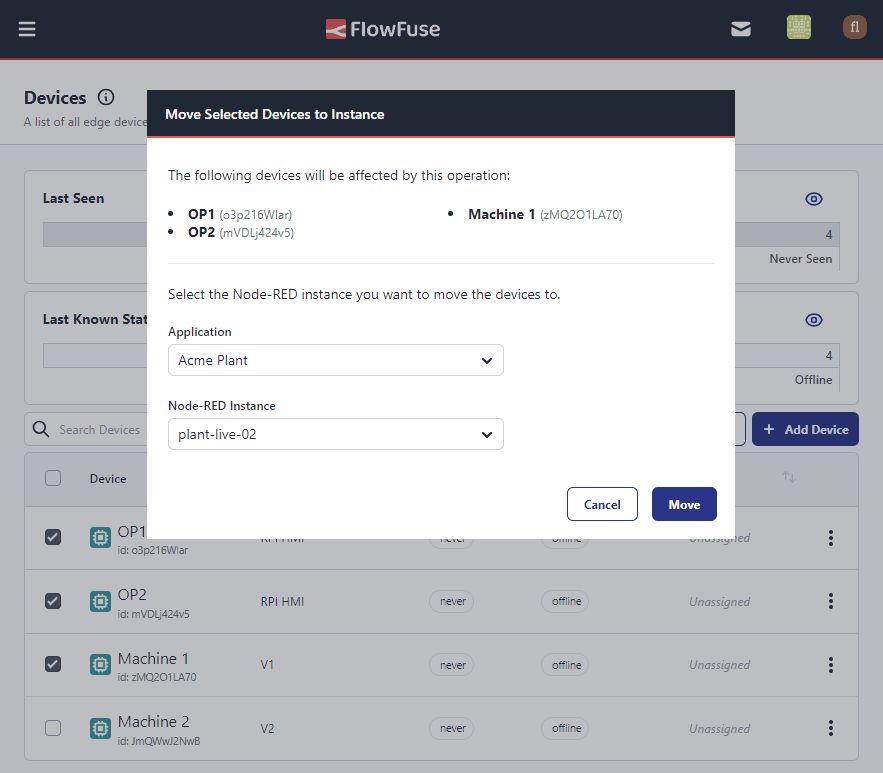FlowFuse 2.8: Static File Service, LDAP Updates & More
Let's take a look at the new features and improvements in FlowFuse 2.8

FlowFuse 2.8 sees a new major feature introduced to the platform. The first iteration of the "Static Assets Service" is now available, allowing you to host and serve static files from your FlowFuse instance, giving you easy access to file storage for your applications, and seamless integration of those assets and files within Node-RED.
Static Assets Service
The Static Assets Service allows you to host and serve static files from your FlowFuse instance. This feature is particularly useful for applications that require file storage, such as images, videos, or static data sets.
With the Static Assets Service, you can upload files directly to your FlowFuse instance and access them from your Node-RED flows, like so:
This is the first step in this new feature set, with more enhancements planned for future releases, whereby you'll also be able to configure access control to public HTTP endpoints for easy access in your Dashboards.
LDAP Service Improvements
Team Membership in FlowFuse can now be automatically managed using LDAP groups. This means that you can now assign roles to LDAP groups, and when a user is added to that group in your LDAP server, they will automatically be assigned the respective role in FlowFuse.
This also extends to the management of FlowFuse Admin users, which was previously only supported for SAML SSO.
The Admin management feature is available for those running self-hosted FlowFuse.
Notifications Improvements
Last release we introduced the Notifications Inbox, and in this release we're starting to expand on the notifications that you wil receive in FlowFuse, starting with alerts when your Node-RED instances and devices crash unexpectedly, and when instances start in "Safe Mode".

We're also added filters to show "Read" notifications, and grouping together similar notifications so that it's easy to parse if you have many notifications of the same type.
Managing Devices at Scale
As promised in the FlowFuse 2.7 Release, we've expanded the actions you can take when working with many Devices at once, which now includes the ability to move Devices between Applications and Instances.

Stricter Approach to Expired Licenses
We've made some changes to how FlowFuse handles expired licenses for self-hosted users.
If your license has expired, you will now be unable to access your FlowFuse instance until you renew your license. This is to ensure that you are always using the latest version of FlowFuse and have access to the latest features and security updates.
If you are currently running an older version of FlowFuse with an expired license please contact the Sales team to discuss renewing your license before upgrading to FlowFuse 2.8. You can check your current license on the "Admin Settings" > "Overview" page.
And Much More...
For a full list of everything that went into our 2.8 release, you can check out the release notes.
We're always working to enhance your experience with FlowFuse. We're always interested in your thoughts about FlowFuse too. Your feedback is crucial to us, and we'd love to hear about your experiences with the new features and improvements. Please share your thoughts, suggestions, or report any issues on GitHub.
Together, we can make FlowFuse better with each release!
Try it out
Self-Hosted
We're confident you can have self managed FlowFuse running locally in under 30 minutes. You can install using Docker or Kubernetes.
FlowFuse Cloud
The quickest and easiest way to get started with FlowFuse is on our own hosted instance, FlowFuse Cloud: Get started for free now, and you'll have your own Node-RED instances running in the Cloud within minutes.
Upgrading FlowFuse
If you're using FlowFuse Cloud, then there is nothing you need to do - it's already running 2.8, and you may have already been playing with the new features.
If you installed a previous version of FlowFuse and want to upgrade, our documentation provides a guide for upgrading your FlowFuse instance.
If you have an Enterprise license please make sure to review this changelog entry
Getting help
Please check FlowFuse's documentation as the answers to many questions are covered there. Additionally you can go to the community forum if you have any feedback or feature requests.
About the Author
Joe Pavitt
Joe has been working with Node-RED for nearly 10 years, having worked with Nick O'Leary at IBM as a Master Inventor, and been one of the early developers working on the original Node-RED Dashboard. Since joining FlowFuse in 2022, Joe has become the lead for the FlowFuse Dashboard (Dashboard 2.0), created the Node-RED Academy and leads design and front-end development for FlowFuse.
Related Articles:
- FlowFuse 2.25: Interacting with MCP Resources in FlowFuse Expert, Improved Update Scheduling, and lots of UI improvements!
- FlowFuse 2.24: FlowFuse Expert in the Node-RED Editor, Scheduled Updates, Simpler Edge Device Addition, Store and Forward Blueprint, and what's next!
- FlowFuse 2.23: MCP and ONNX nodes, FlowFuse AI Expert on the homepage, Application-level Permission Control, FlowFuse Assistant for Self-Hosted, and more!
- FlowFuse 2.22: AI Copilot for node editing, FlowFuse Broker schema autodetection, Improved Snapshots Interface, eCharts enablement, and FlowFuse Dashboard Updates
- FlowFuse 2.21: AI-Assisted SQL, Low-Code Custom Nodes, and Remote Instance Performance Insights